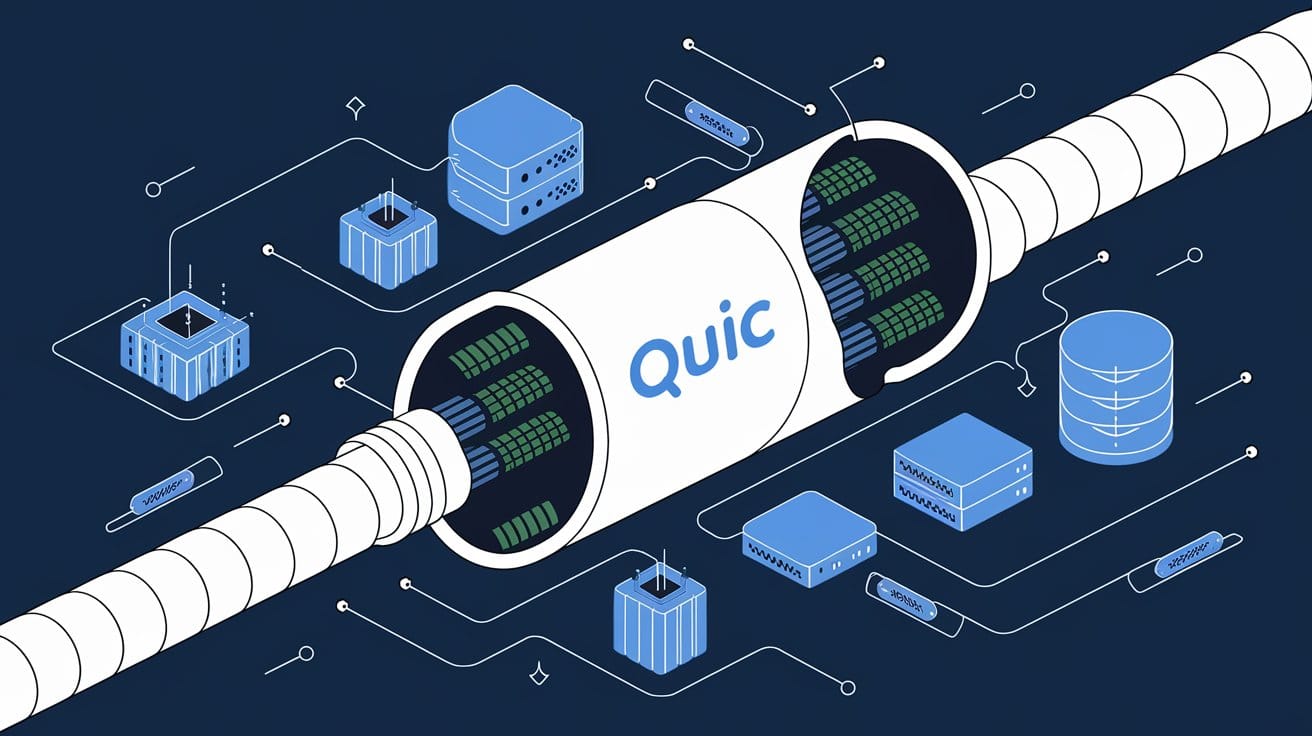
QUIC Protocol: The Future of Secure and Fast Internet Communication
In the ever-evolving world of internet protocols, QUIC (Quick UDP Internet Connections) has emerged as a groundbreaking technology designed to revolutionize how data is transmitted over the web. While it’s not yet widely adopted, QUIC is gaining traction due to its speed, efficiency, and enhanced security features. For cybersecurity professionals, understanding QUIC is essential as it introduces new opportunities and challenges in securing internet communications.
What is QUIC?
QUIC is a transport layer protocol developed by Google in 2012 and later standardized by the Internet Engineering Task Force (IETF). It was designed to address the limitations of traditional protocols like TCP (Transmission Control Protocol) and TLS (Transport Layer Security) by combining their functionalities into a single, streamlined protocol. QUIC operates on top of UDP (User Datagram Protocol), making it faster and more efficient.
Key Features of QUIC
- Faster Connection Establishment:
- QUIC reduces connection setup time by combining the handshake process for establishing a connection and encrypting data into a single step. This eliminates the need for multiple round trips, making it ideal for low-latency applications.
- Built-in Encryption:
- Unlike TCP, which relies on external protocols like TLS for encryption, QUIC has encryption baked into its design. It uses TLS 1.3 by default, ensuring secure communication from the start.
- Improved Performance:
- QUIC supports multiplexing, allowing multiple streams of data to be sent over a single connection without blocking. This reduces latency and improves performance, especially for applications like video streaming and web browsing.
- Connection Migration:
- QUIC can maintain a connection even if a user switches networks (e.g., from Wi-Fi to mobile data). This is particularly useful for mobile devices and ensures uninterrupted service.
- Error Correction:
- QUIC includes advanced error correction mechanisms, reducing packet loss and improving reliability.
QUIC from a Cybersecurity Perspective
While QUIC offers significant advantages, it also introduces new considerations for cybersecurity professionals. Here’s a closer look at the security implications of QUIC:
1. Enhanced Security with TLS 1.3
- QUIC’s integration of TLS 1.3 ensures that all data transmitted over the protocol is encrypted by default. This eliminates the risk of unencrypted data being intercepted or tampered with during transmission.
- TLS 1.3 also provides forward secrecy, meaning even if a private key is compromised, past communications remain secure.
2. Reduced Attack Surface
- By combining the transport and encryption layers, QUIC reduces the attack surface compared to traditional protocols like TCP+TLS. This makes it harder for attackers to exploit vulnerabilities in the handshake process or intercept unencrypted data.
3. Challenges for Network Monitoring
- QUIC’s encryption makes it difficult for traditional network monitoring tools to inspect traffic for malicious activity. This poses a challenge for organizations that rely on Deep Packet Inspection (DPI) to detect threats.
- Cybersecurity teams may need to adopt new tools and techniques to monitor QUIC traffic effectively.
4. Potential for Abuse
- Like any protocol, QUIC could be exploited by attackers. For example, its speed and efficiency could make it an attractive option for DDoS (Distributed Denial of Service) attacks or data exfiltration.
- Organizations must ensure their security infrastructure is capable of detecting and mitigating such threats.
5. Adoption and Compatibility
- As QUIC is still not widely adopted, there may be compatibility issues with existing security tools and infrastructure. Organizations need to evaluate their readiness to support QUIC and ensure their systems are updated to handle it securely.
Why QUIC Isn’t Widely Used Yet
Despite its advantages, QUIC’s adoption has been slow due to several factors:
- Lack of Universal Support:
- Not all networks, devices, and applications support QUIC yet. For example, some firewalls and proxies may block QUIC traffic.
- Complexity:
- Implementing QUIC requires significant changes to existing infrastructure, which can be a barrier for organizations.
- Security Concerns:
- The inability to inspect QUIC traffic for threats has raised concerns among cybersecurity professionals, slowing its adoption in enterprise environments.
The Future of QUIC in Cybersecurity
As QUIC gains traction, it’s likely to become a standard protocol for internet communication. For cybersecurity professionals, this means:
- Adapting Security Tools: Developing or adopting tools capable of inspecting encrypted QUIC traffic.
- Educating Teams: Ensuring cybersecurity teams understand QUIC’s architecture, benefits, and risks.
- Collaborating with Vendors: Working with technology vendors to ensure compatibility and security.
Conclusion
QUIC represents a significant leap forward in internet communication, offering faster speeds, improved reliability, and enhanced security. However, its adoption also presents new challenges for cybersecurity professionals. By understanding QUIC’s architecture and implications, organizations can prepare for its widespread use and ensure their networks remain secure in the era of QUIC.
As the internet continues to evolve, QUIC is poised to play a central role in shaping the future of secure and efficient communication. Are you ready for the QUIC revolution?

